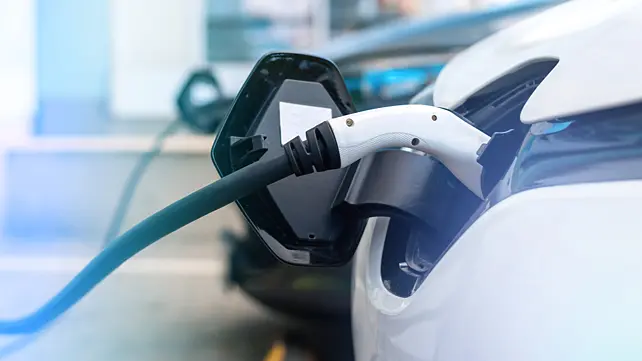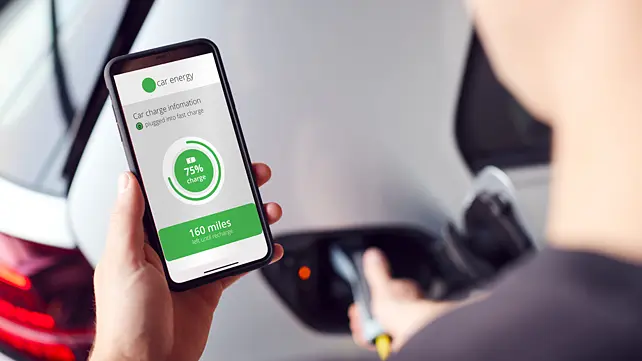
By 2030, the Indian automobile sector, which currently ranks fifth globally, is projected to overtake the United States as the largest. This prophecy becomes even more crucial as we bring electric mobility into the mix of things.
The Indian EV market, according to the India Energy Storage Alliance (IESA), is estimated to grow at a CAGR of 36% till 2026.
Owing to the incipient growth in the EV charging space, retailers are showing great interest in exploring charging point possibilities since it has the potential to be a big source of revenue and customer loyalty for them.
To get a sense of the quantum of finances involved in this space, we can gauge into NITI Aayog estimates that suggest a total investment of $ 267 billion (INR 19.7 lakh crore) in EVs, battery infrastructure, and charging infrastructure is involved in powering India’s full transition to EVs.
This article tries to encapsulate how India’s EV charging tech infrastructure can develop into one that is fully functional and equipped, as businesses and retailers work together to dot our roads with EV chargers at distributed and diverse locations, garnering more drivers and increasing revenue with EV charging and loyalty programmes.
AC Or DC? Acclimatise Charger Type With Your Business
Before beginning to physically plug in vehicles, it's vital to zoom out and think about a few things from a big picture perspective, whether you're responsible for building up public EV charging infrastructure or converting your municipal fleets to electric.
Let's first go through the various EV charging capabilities and how they might benefit clients at various business models.
For businesses where drivers park for an hour or more, level 2 AC charging is a smart option because it may add 40-65 km of range each hour. This is beneficial for workplaces, homes, and hospitality areas where drivers park for eight hours or more, as well as select restaurants, theatres, and stadiums.

On the other hand, DC fast chargers are well suited for sites, where vehicles would be parked for less than an hour because they can add approximately 240 km of range per hour or even more. This comprises gas stations, convenience stores, and other retail establishments like fast food joints. To provide drivers with a wonderful experience and bring added revenues for your business, installing DC fast charging can perfectly fit into your business strategy.
Discoverability Is The Key
EV drivers depend on charging applications or dashboard-integrated systems to quickly locate convenient charging locations, including retail storefonts. When searching for a fuelling location, EV drivers will look for their preferred brand of charging stations as well as inviting on-site amenities like retail.
When planning your EV charging strategy, be sure to pick a partner that makes your location simple to find through a well-known app and has the capacity to seamlessly interact with other services that highly-connected vehicles offer, such as Android Auto, Apple CarPlay, and other intelligent in-vehicle payment mechanisms.
It might also be useful to touch upon charging point locating apps from a user standpoint. To help the other EV users in an app-using community, who might be on the road for a long stretch between public charging stations, some EV drivers offer information on their private domestic charging station in addition to information on public charging stations. In-app trip planners assist EV drivers in planning their route so they can keep dependably charged throughout the drive, if they are getting ready for a road trip.
Creating the Perfect EV Charging Experience for Users
EVs are developed in an age of connectivity and emerging technology. In this day and age, user experience is everything. The pressing question, however, is how can electric mobility be optimised for user-experience rather than one that has just been able to attain technical excellence? For retailers and charge point facilitators, they must persuasively illustrate how the experience can alter the customers' life when you're asking them to break a pattern that they've been using for a very long time.
UX-mapping can be very worthwhile here. Once EV drivers discover a brand’s charging station, they'll anticipate a simple and comfortable charging process, whether it involves a charging brand they already use or an in-vehicle experience that is naturally incorporated into their driving routines. Selecting a charging point that EV users already trust will increase your revenue. Additionally, brands should make sure that their charging stations are simple to locate and use, with obvious signage and accessible parking.

Contrarily, drivers will choose another site and avoid one charge point entirely if it is too difficult for them to identify and utilise a station. As a way to get vehicles parked and charged at your storefronts and increase their familiarity with your retail business, brands also enable you to brand your stations and display films or offers directly on the station.
Creating A Value-Outpost Of In-Store Revenue
Offering EV charging represents a big commercial opportunity. While waiting for their cars to charge, customers may spend more time and money in your store, which sets up the perfect conditions resulting in boosted sales. A charging point also helps draw customers and increase their spend to retailers who install them, translating into newly created white spaces for wealth generation.
Further, retailers can establish deeper connections with drivers who use their stations by using smart EV charging that enables drivers to engage with stations online or through a mobile app. Retail businesses may discover more about who is using their stations and when by having vehicles submit a straightforward connection request via the app, which unlocks previously unknown data about their customers.
On top of this, EV charging practically puts retailers’ stores on the map. EV drivers rely on EV charging apps to precisely spot charging locations fast, including retail establishments. Due to the fact that EV owners frequently charge their vehicles while they shop, having charging stations on-site can influence customers to choose a particular retailer over one of its competitors.
Opening Directions Beyond Business With The CPO Model
CPOs can take a store owner's income and space optimisation to the next level. As a retailer, you have a variety of options for pricing, including the cost of energy used (cost per kWh), the length of time it takes to charge, a flat fee, or a mix of these elements. Your business model, utility rate structure, customer loyalty programme layout, and the amount of time drivers spend at your location will all influence the pricing method that is best for you. Make sure the billing provider you select provides you freedom to select a pricing approach.
Beyond a business standpoint, the Charge Point Operator model will also propel India’s mass shift from internal combustion engine (ICE) vehicles to EVs by expanding infrastructural footprint, eventually helping us achieve the target of a 100% EV adoption by 2030.
About the Author: Attaining close to 20 years of entrepreneurial experience, Raman Bhatia founded the now-NSE-listed Servotech Power Systems in 2004 and is currently leading the organisation's collective efforts in the capacity of Managing Director. Servotech enables him to actualise his vision of making smart yet sustainable products accessible and affordable for common people. As a thought leader, Bhatia feels responsible to engage stakeholders in adhering and switching to clean and renewable energy sources, to bring solar, EV-charging, and other climate-positive solutions closer to the public.
Also read:
Daimler, Traton, Volvo Partner For European Charging Infrastructure
Tata Power Joins JP Infra Mumbai To Install 60 EV Charging Stations